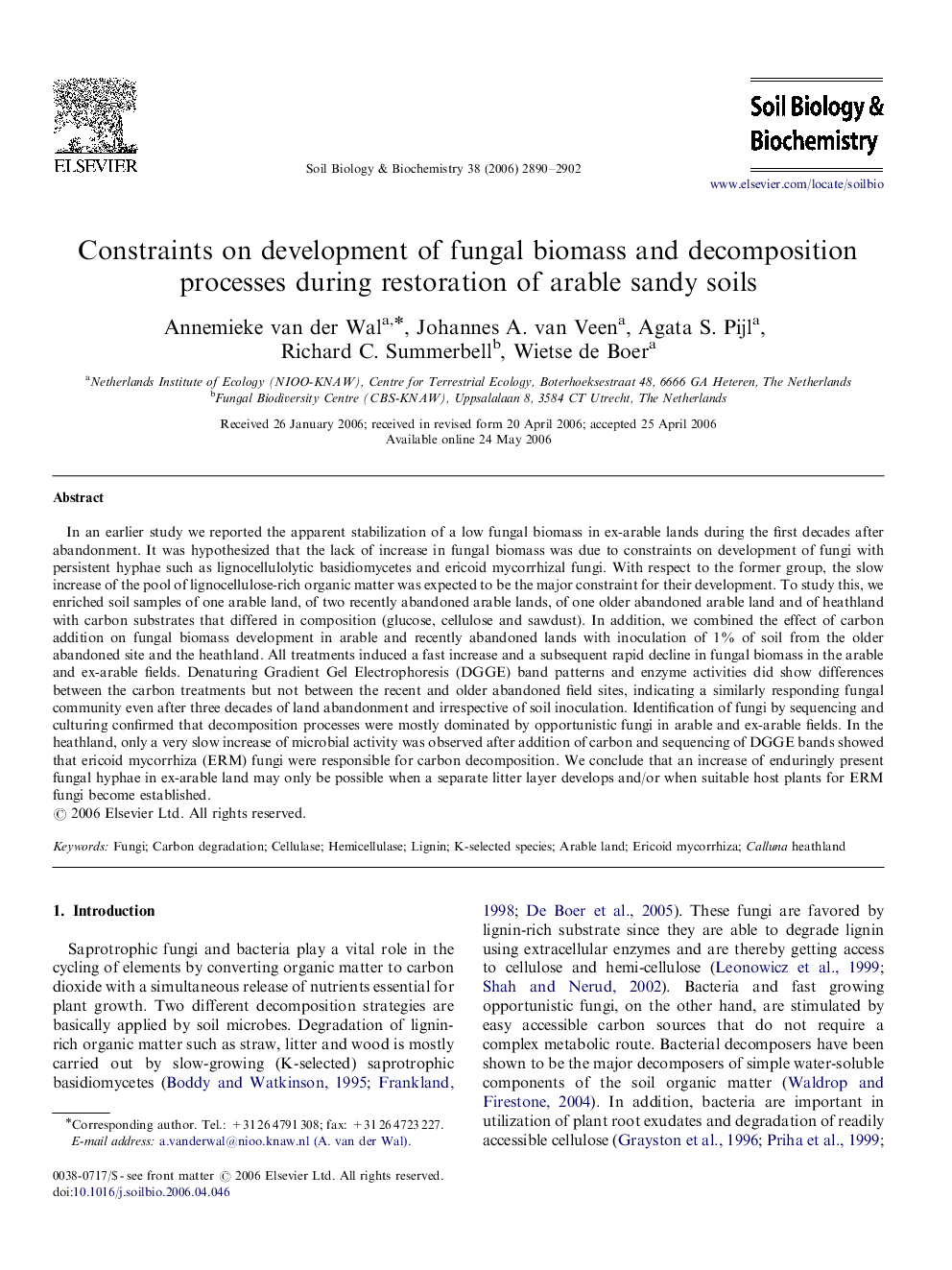| کد مقاله | کد نشریه | سال انتشار | مقاله انگلیسی | نسخه تمام متن |
|---|---|---|---|---|
| 2027142 | 1070090 | 2006 | 13 صفحه PDF | دانلود رایگان |

In an earlier study we reported the apparent stabilization of a low fungal biomass in ex-arable lands during the first decades after abandonment. It was hypothesized that the lack of increase in fungal biomass was due to constraints on development of fungi with persistent hyphae such as lignocellulolytic basidiomycetes and ericoid mycorrhizal fungi. With respect to the former group, the slow increase of the pool of lignocellulose-rich organic matter was expected to be the major constraint for their development. To study this, we enriched soil samples of one arable land, of two recently abandoned arable lands, of one older abandoned arable land and of heathland with carbon substrates that differed in composition (glucose, cellulose and sawdust). In addition, we combined the effect of carbon addition on fungal biomass development in arable and recently abandoned lands with inoculation of 1% of soil from the older abandoned site and the heathland. All treatments induced a fast increase and a subsequent rapid decline in fungal biomass in the arable and ex-arable fields. Denaturing Gradient Gel Electrophoresis (DGGE) band patterns and enzyme activities did show differences between the carbon treatments but not between the recent and older abandoned field sites, indicating a similarly responding fungal community even after three decades of land abandonment and irrespective of soil inoculation. Identification of fungi by sequencing and culturing confirmed that decomposition processes were mostly dominated by opportunistic fungi in arable and ex-arable fields. In the heathland, only a very slow increase of microbial activity was observed after addition of carbon and sequencing of DGGE bands showed that ericoid mycorrhiza (ERM) fungi were responsible for carbon decomposition. We conclude that an increase of enduringly present fungal hyphae in ex-arable land may only be possible when a separate litter layer develops and/or when suitable host plants for ERM fungi become established.
Journal: Soil Biology and Biochemistry - Volume 38, Issue 9, September 2006, Pages 2890–2902